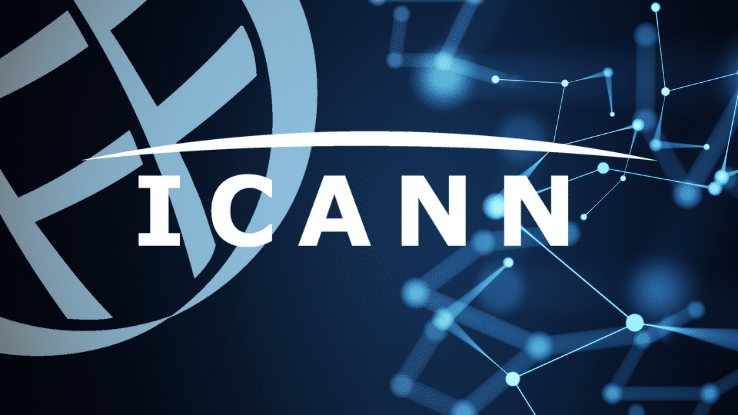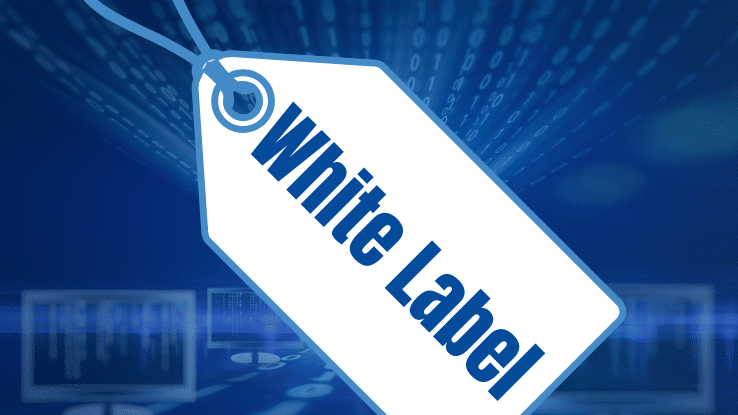The turn of the year is coming – and with it comes an excellent opportunity to set up your domain portfolio for 2026. Whether you’re just starting out or are already an experienced domain professional: if you consciously optimize now, you can finish Q4 2025 strong and start the new year with a tailwind.
In this article you will find:
- Current trends that will influence your domain business in 2026
- Your domain winter check – a structured analysis & optimization
- Specific tips & best practices for beginners & professionals
- A timetable for November / December
1. domain trends 2026: Recognizing opportunities for your portfolio
For optimal planning and strategy, it is essential to know the larger movements in the market. Here are some observed trends, supported by studies and market reports:
| Trend | What do the figures / observations say (verified) | Meaning for you |
|---|---|---|
| New generic TLDs (ngTLDs) and strategic opportunities | According to the Domain Name Industry Brief (Q1 2025), ngTLDs had ~ 37.8 million registrations at the beginning of 2025. This is a noticeable increase compared to Q4 2024. | It pays to have ngTLDs in your portfolio. But: Observe renewal rates & market behavior before you scale strongly. |
| Local ccTLDs, branding & SEO benefits | According to the CENTR TLD Market Report Sept. 2025, European ccTLDs recorded moderate growth of 0.4 %. In Europe, 54% of domains use ccTLDs, which underlines their importance for local branding and SEO. | For local brands, agencies with a regional focus: ccTLDs can bring trust & SEO relevance. But check costs/benefits. |
| Specialized domains like .ai for tech and AI projects | The number of .ai domains increased from 40,000 in 2020 to 859,000 by August 2025. Revenue for Anguilla from .ai domains has increased significantly. The .ai ccTLD now accounts for a significant proportion of government revenue. | If you own or manage domains for tech or AI projects, .ai is an attractive choice: it signals innovation and often offers better availability than .com or other TLDs. Short, concise .ai domains can also command a high premium value. Note, however, that costs are often higher and the pricing and renewal structure should be checked, as many .ai domains have a minimum term of two years or require expensive renewal fees. |
| Renewal rates: Content beats age | The CENTR study “Key Domain Characteristics Driving Renewal Rates” (2024) shows: Domains with active content have approx. 90% renewal rates, parked or no-content domains have significantly lower rates (low-content ~ 78.5% vs. no-content ~ 70.5%). Age also has an impact on renewal rates: very young domains (1-2 years) have significantly lower renewal rates than older domains. | Integrate content and active use into your domains – even simple landing pages can make a difference. Especially for new domains: without content and traffic, the risk of downtime increases significantly. |
| Price development, cost planning & budget for 2026 | Numerous registries have increased both the renewal fees and the prices for new registrations. Studies and market reports also show that inflation and increased registry costs are exerting additional pressure on pricing. | Plan your budget long-term over several years instead of just taking the first year into account. Communicate price developments transparently, both in offers for customers and in the reseller area. |
| Quality over quantity: focus on use & relevance | Both the CENTR study and the DNIB reports show: Many registrations alone are of little help if many domains are parked or little used. Renewal rates & longevity suffer. Example: Basic trend analysis shows that domains with content + usage perform significantly better. | Concentrate on domains that bring real benefits: Branding, visibility, SEO, usage. For domains that are hardly used, develop strategies: either deliver content, sell or cancel. |
| Domain security, abuse monitoring & prevention | According to the OpenProvider Global Domain Name Report 2025, domain security is increasingly becoming an expectation. 75% of companies report attempts at domain-based phishing attacks. Spamhaus reports that newly registered domains are increasing, and many TLDs remain vulnerable to malware, phishing & abuse. In March 2025, ~8.2 million new domains were registered; ~78.1% of these are gTLDs; the proportion of IoCs (Indicators of Compromise) shows a strong presence of gTLDs. | For your portfolio, this means that security is not an option, but a must. Rely on consistent abuse monitoring, fast takedown processes, trustworthy registrars and registries as well as secure DNS functions such as DNSSEC. TLDs that are frequently used for abuse should either be avoided or checked particularly carefully. |
| Phishing, typosquatting & defensive registrations | Research has shown that ~66.1% of phishing domains use low-cost TLDs and variants to impersonate legitimate brands rather than working directly with well-known legacy TLDs. New gTLDs such as .store, .top, .xyz have a significantly disproportionate share of reported cybercrime domains. | Check domain names and TLDs carefully for plausibility, such as whether they could easily be misused by copycats. Secure important brand variants, consider defensive registrations and actively monitor how your domains are used to detect abuse at an early stage. |
| Market growth & shift in registration figures | At the end of the first quarter of 2025, there were around 368.4 million domain registrations worldwide, which corresponds to year-on-year growth of 1.7%. At the same time, .com & .net are losing some ground proportionally, while new gTLDs are slowly gaining ground. | For you, this means: take advantage of market growth, but do not focus on unsafe or high-risk TLDs. Diversify your portfolio, but always keep it valued and low-risk. |
| Sustainability & CSR / Sustainable branding for domains | The OpenProvider Report mentions sustainability as a growing criterion: Customers are increasingly asking for “green” offers, sustainable practices for hosting/DNS, etc. | In practical terms, this means choosing domains, hosting partners and services that take energy efficiency, climate protection and sustainable power sources into account. Sustainability can also be a valuable differentiator for your branding. |
| DNS infrastructure & data protection (privacy, WHOIS, DNSSEC) | The acceptance of DNSSEC in European ccTLDs is around 10.5%. This shows the increasing importance of DNS security. WhoisXML API and other threat intelligence reports show that domains with insecure DNS dynamics (e.g. open DNS updates) are more vulnerable. | For you, this means that secure DNS configurations, the use of DNSSEC, WHOIS privacy and robust name servers are essential. In addition, data protection and transparency in the WHOIS area strengthen trust in your portfolio. |
| Multi-year registrations vs. SEO myths | Clarification: The widespread myth that multi-year registration brings direct ranking advantages with search engines is not substantiated by official SEO sources. | Multi-year registrations are useful for budget planning and cost security, but do not bring any direct SEO benefits and should not be marketed as such. |
| Price increases and price transparency | Many registries and TLDs regularly adjust their prices – be it for renewals, premium domains or registry fees. It is important to be informed about upcoming price changes. | Recommendation: Consider the cost structure over several years and communicate it transparently. If necessary, secure domains in advance if price increases are to be expected and strengthen customer loyalty through fixed prices or models that guarantee price security. |
2. domain winter check: analyze your portfolio step by step
Knowing the trends will make your check more targeted and meaningful. Here is a tried and tested structure:
| Test step | Why | Procedure |
|---|---|---|
| 1. inventory | You need to know what you have before you act | Export all domains in a clear table with the following columns: Name, TLD, registration year, renewal costs, status (active, parked or unused), traffic, hosting provider, SSL certificate and technical features such as DNSSEC, CDN or WHOIS privacy. |
| 2. cost analysis & price development | Some domains are financially burdensome | Analyze which domains are likely to increase renewal costs and identify those that hardly generate any revenue but continue to cause costs. |
| 3. renewal rates & default risk | Some domains are hardly ever renewed | Consider findings such as: young domains without content have a high risk of failure. Therefore, take measures such as automatic renewals (auto-renew) or reminders to avoid losses. |
| 4. content / usage check | More use = higher chances of renewal | Think about how you can activate domains with low usage, for example through simple landing pages, redirects, content offers or affiliate programs. |
| 5. portfolio streamlining | Not every domain is worthwhile | Define clear criteria for when domains should be canceled or sold – for example, if the costs are too high and there is no benefit. |
| 6. strategic expansion | Targeted growth management | Choose new domains (nTLDs, ccTLDs) based on trends, but on a test basis; Choose new domains (ngTLDs, ccTLDs) based on current trends, initially on a test basis, and monitor renewal rates and actual demand. |
| 7. offer & price strategy (for reseller/agency) | Customer loyalty & clear communication | Create bundles, offer discounts for multi-year extensions and present the costs transparently over several years. |
3. tips & best practices for beginners and professionals in the domain business
So that your winter check doesn’t end up in a drawer, here are some practical recommendations:
For beginners
- Start with a small part of your portfolio (e.g. 20 domains) and go through the check process there.
- Use tools or services that use content crawlers to recognize “signs of life” (e.g. which domains are actively used).
- Make sure you’re not just calculating marketing promos – plan for Year 2 and Year 3 renewals too.
- Even a simple landing page or “Coming Soon” site on a domain can increase the likelihood of renewal.
For professionals & portfolio operators
- Diversify: a mix of established, secure TLDs and selective nTLDs or ccTLDs.
- Use multi-year bookings if price increases are foreseeable.
- Automate as many routine processes as possible (renewal reminders, automatic renewal, SSL updates, performance checks, etc.).
- Observe the aftermarket: Domain trends (e.g. AI, IoT, sustainability) could give you clues to lucrative additions.
- For customer offers: communicate clearly how the costs will develop over 2-3 years to avoid surprises and disgruntled customers.
4. schedule for November / December: How to prepare your portfolio for 2026
| Period | Focus / Task |
|---|---|
| Beginning of November | Export & analysis of your domain portfolio |
| Mid-November | Cost analysis & classification (benefits vs. costs) |
| End of November | Making domain decisions (keep / cancel / sell) & strategic investment ideas |
| December | Set automations (auto-renew, reminders), maintain content, define offers, set budget for 2026 |
Conclusion: Optimize your 2026 domain portfolio with strategy & clarity
If you see your domain portfolio as a living asset – not just a list of names – you are already one step ahead of the competition. 2026 will not be a year for mass registrations or blind growth, but for strategic maintenance, a focus on quality and smart automation.
The trends of recent months show a clear overall picture:
- New gTLDs continue to grow, but remain volatile – they are particularly worthwhile with a well-considered selection and market observation.
- ccTLDs maintain their strength as local trust and SEO boosters, especially in Europe.
- .ai and specialized TLDs are booming, driven by the global AI trend – a clear indicator of high demand in tech and innovation segments.
- Content remains the strongest success factor: domains with active use achieve renewal rates of around 90%, while unused domains fall significantly behind.
- Costs and security are gaining in importance: price increases due to registries and the growing need for security monitoring make budget planning and technical security management more important than ever.
- Changing market structure: While .com shares are falling slightly, growth is shifting moderately towards ngTLDs and specialized endings – a signal for targeted diversification instead of blind expansion.
The summary:
If you want to be successful in 2026, you should prioritize quality over quantity, actively use portfolios, prioritize security and strategically cushion price developments. Domains that carry content, provide real benefits and create trust not only ensure higher renewal rates – they also increase the long-term portfolio value.
Right now, it’s worth simplifying processes and using tools that give you more overview and control. Platforms such as ResellerInterface help you to manage domains centrally, automate renewal processes and keep a transparent eye on price developments – so that you can concentrate on strategy instead of routine.
Use the weeks before the end of the year to get things in order, identify opportunities and prepare yourself optimally for 2026.
Because a well-maintained, actively used portfolio is not only more stable – it is also more profitable, resilient and sustainable.








Leave a Reply